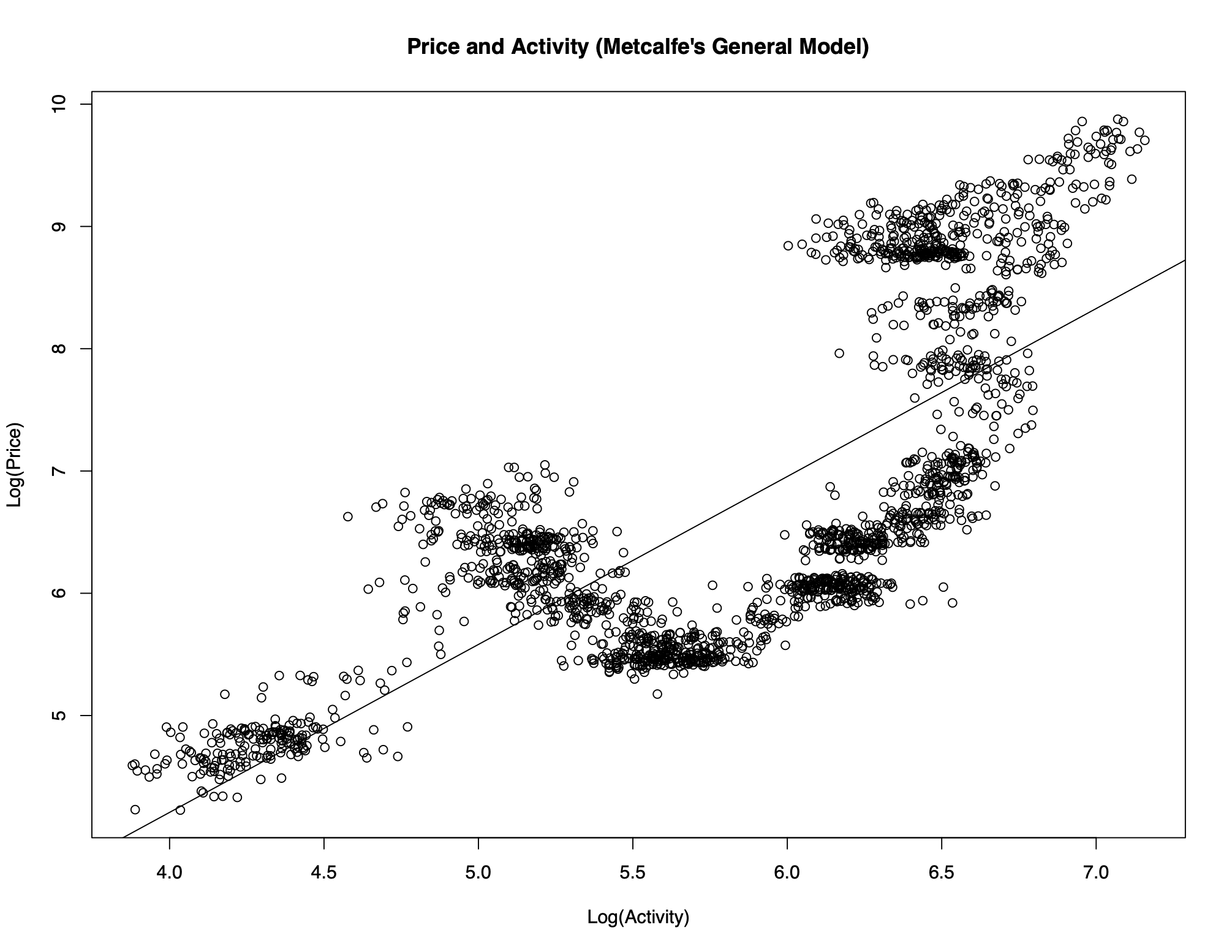Is there Power in Numbers?
My first chapter evaluates whether or not there exists a positive relationship between the number of users and prices of a given cryptocurrency. This is an implicit assumption in much of the existing literature. The main contributions are addressing the econometric issues and providing interpretation based on the transaction network.
The relationship is estimated for the two most popular digital currencies, Bitcoin and Ethereum. A cross currency variant using a vector error correction model, which includes Litecoin, is also completed. Inference on the relevant parameters is achieved using a variety of methods, including bootstrap approaches. Theoretically, we show that a relationship like that assumed by other authors, emerges in a network context if prices reject the sum of user utility. In particular when utility depends exclusively on how many other users there are. In the case of an exponential relationship, popular in the empirical literature, the parameter of interest can be thought of as a measure of network density in a regular graph.
In the Ethereum network, prices are cointegrated with active addresses, our measure of users. The estimated parameter, for an exponential relationship, implies that prices are consistent with each user being connected to around 30 others. This long-run relation has signifcant effects on short-run movements of prices and activity levels when they deviate. These results however do not extend to Bitcoin and it isn't possible to generalise the relationship between users and prices of digital currencies.
